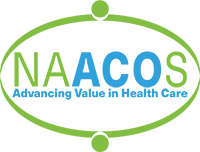|
News Release Despite the tremendous adversity facing our health system, population-focused organizations, like accountable care organizations (ACOs), are uniquely positioned in crisis like this because of their years of work supporting care coordination and building an infrastructure to support their ACO work. ACOs across America are identifying vulnerable patients at high-risk for COVID-19 using their population management tools, educating patients about minimizing exposure, making sure they have enough food and medication to stay home, remotely monitoring their underlying conditions, treating cases through telemedicine, and managing post-discharge complications with integrated home health and effective relationships with post-acute providers. NAACOS has compiled some of these success stories to share.EXAMPLES ACOs have quickly pivoted to widely deploy telehealth to maintain patient relationships. At Summit Medical Group in New Jersey, all patients discharged from the hospital are contacted by a care manager and scheduled for a telemedicine visit within 48 hours, with clinicians and patients jointly mapping out a follow-up plan based on illness severity. Since a great deal of ACO success lies in managing patients’ transitions from the hospital, to post-acute care, to the home, ACOs have leveraged their expertise in handling these "handoffs." Advocate Aurora Health, who operates three ACOs in Wisconsin and Illinois, launched two new programs in five weeks—Home Hospital and Recovery at Home. Patients in both programs receive in-person and virtual home visits from advanced practice clinicians and nurses. Home hospital patients receive oxygen and devices to allow for remote patient monitoring and live video visits, while Recovery at Home patients receive a pulse oximeter for reporting vitals. WHY IT MATTERS BACKGROUND OUTREACH ##### Contact: |
